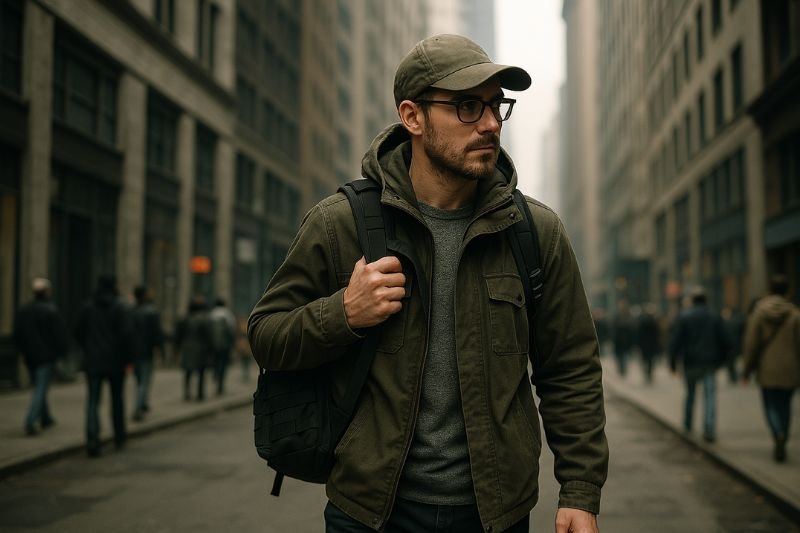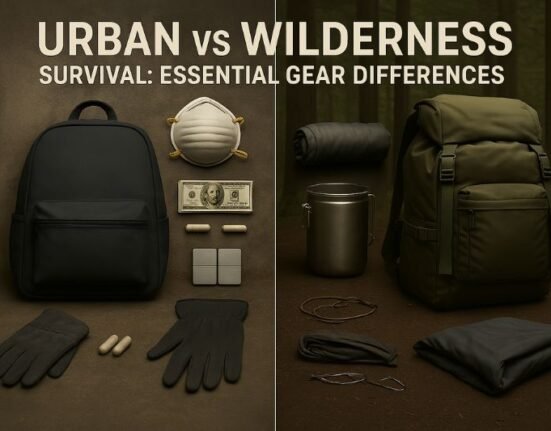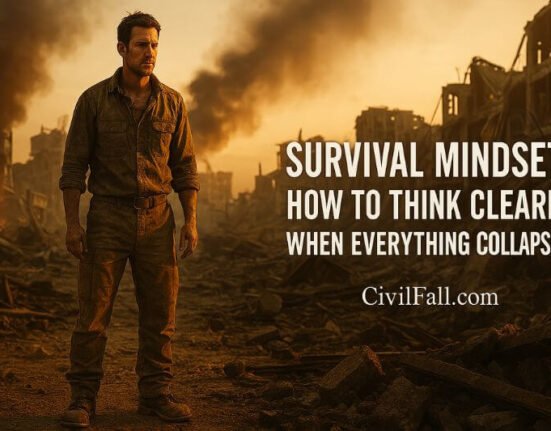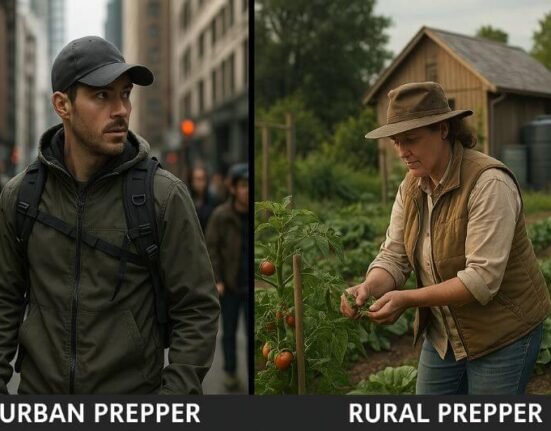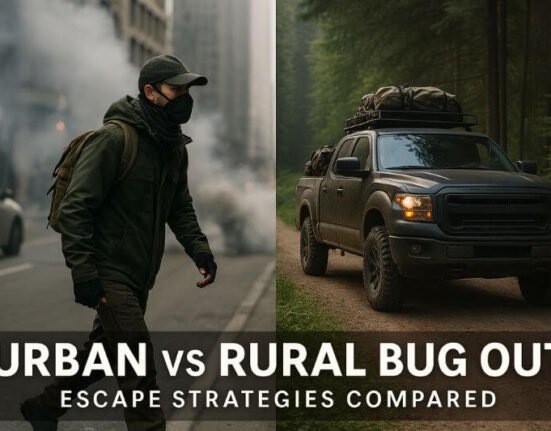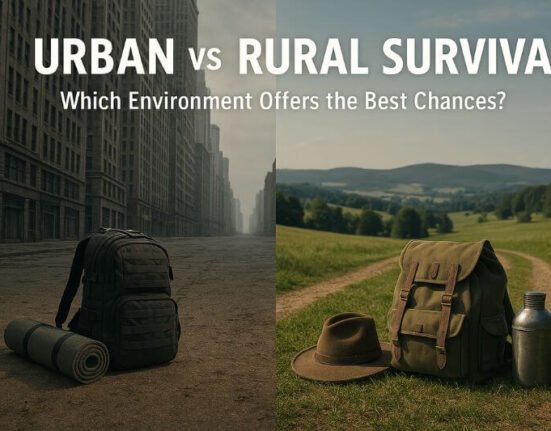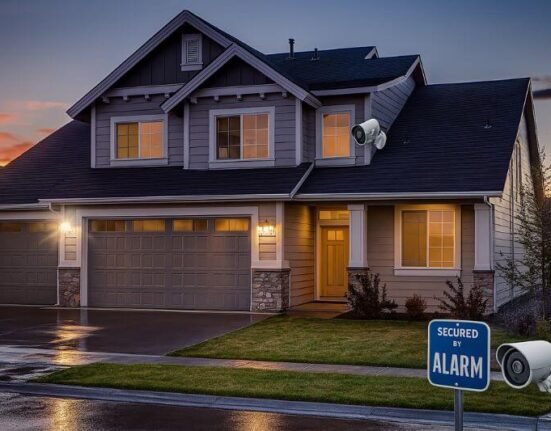When chaos erupts in a city—whether it’s civil unrest, a cyberattack, a prolonged blackout, or a natural disaster—urban dwellers face a very specific set of challenges. Skyscrapers become cages. Streets turn into traps. And neighbors, once friendly, may become desperate competitors for resources.
Unlike rural survival, where space, nature, and distance can offer some relief, cities compress everything: people, noise, danger, and unpredictability. In this environment, survival demands more than supplies. It demands mindset, awareness, and adaptability.
This guide is designed to take you beyond the gear checklists and into the tactical behaviors, mindset shifts, and urban-specific strategies that actually keep you alive. Whether you’re in a high-rise apartment or a downtown loft, these strategies are tailored for the unique pressures of surviving in a concrete jungle during a crisis.
What follows is a real-world, no-theory survival blueprint—from mastering your mental game to fortifying your shelter and navigating a collapsing city without becoming a target. These aren’t abstract tips. They’re drawn from real crisis events, survival psychology, and modern urban preparedness tactics.
Here’s what you’ll learn:
- How to build a survivalist mindset before the chaos hits
- Where to position yourself in a building when riots erupt
- How to stay fed and sane even if food supplies collapse
- How to make yourself invisible in a city full of desperate eyes
- And how to build passive defenses that deter looters without inviting conflict
If you live in a city—and especially if you plan to stay during the first phase of collapse—this guide will walk you through the decisions that matter most, when hesitation is fatal and preparation is survival.
Let’s begin with the foundation: the urban survival mindset.
🧭 Part 1: The Urban Survival Mindset – Mastering the Mental Game
When disaster strikes in a city, survival is less about brute strength and more about how fast you adapt. Before we dive into the tactical side of urban survival strategies, we need to talk about the mindset shift that separates survivors from victims in the concrete jungle.
Because in a densely packed urban crisis, your worst enemies aren’t just looters or shortages—they’re panic, noise, unpredictability, and your own fear.
🧠 Urban Survival Starts in Your Head
Most people in cities live in total dependence on infrastructure: food deliveries, digital maps, clean water on tap, and constant police presence.
When that structure collapses—whether from a cyberattack, a natural disaster, or civil unrest—90% freeze, 5% panic, and 5% adapt.
“In urban collapse scenarios, decisiveness is survival. The ability to act without hesitation beats almost every piece of gear you can buy.”
— Selco Begovic, Balkan War survivor
🧩 Step 1: Know the Urban Collapse Timeline
In most major crises, the urban breakdown follows a predictable sequence. Understanding it helps you act ahead of the masses.
| Time After Crisis | What Happens | Your Strategy |
|---|---|---|
| 0–6 Hours | Confusion, denial, media blackout | Gather info. Stay quiet. Prep quietly. |
| 6–24 Hours | Panic buying, traffic chaos, rumor spread | Secure home. Top off supplies. No panic. |
| 24–72 Hours | Looting, blackouts, violence begins | Lock down. Defend. Avoid movement. |
| Day 4+ | Systemic collapse. Military/militia presence | Bug out or go fully grey. Change rhythm. |
🧱 Step 2: Embrace the Grey Man Philosophy
In urban survival, visibility is vulnerability. The more people notice you—your gear, your confidence, your direction—the higher your risk.
The Grey Man Strategy means:
- Dressing blandly (earth tones, no tactical gear in public)
- Carrying low-profile gear (convert military bags to messenger-style)
- Avoiding eye contact, moving with purpose but not urgency
- Never bragging, broadcasting, or oversharing—even to neighbors
“In a world of chaos, your ability to become invisible is your best weapon.”
— Urban Survival Manual, Vol. 2
🎯 Step 3: Train Situational Awareness
Most urban dwellers live on autopilot—headphones on, staring at screens, ignoring red flags. Survival means seeing everything before it sees you.
🔍 Situational Awareness Checklist:
- Scan exits whenever you enter a space
- Trust your gut: tension, noise, crowd shifts = act
- Note who’s following you or watching too long
- Use reflections, windows, mirrors to monitor surroundings
- Avoid habitual routes; rotate paths daily if threat persists
The U.S. Department of Homeland Security defines situational awareness as “the ability to identify, process, and comprehend information about how to survive in an emergency.“
📋 Step 4: Understand Urban Resource Flow
If you’re in a city, you need to understand the flow of supplies—because once they stop, the game changes.
Key Urban Resource Vulnerabilities:
- Food: Most supermarkets hold just 3 days of stock
- Water: Pumped via electric systems—grid failure = dry taps
- Fuel: Gas stations rely on trucks; panic = dry pumps in 24–48h
- Medical: ERs overflow rapidly. Backup plans (first aid, meds) are essential.
Knowing where to find hidden or alternative resources—abandoned vending machines, office breakrooms, rooftop water tanks—can be the edge.
🧭 Step 5: Build Mental Rehearsal Habits
Urban survival isn’t about improvisation. It’s about rehearsing your response to chaos before it hits.
Practice:
- Exiting your building in darkness
- Escaping a riot without drawing attention
- Navigating home with no phone or GPS
- Treating a wound with only your EDC kit
This builds neural “muscle memory.” So when it’s real—you don’t freeze. You move.
“Train how you fight. Fight how you train.”
— Rule #1 of every professional survivalist
🔐 Summary: Top 5 Urban Mindset Shifts
| Old Mentality | Urban Survival Mindset |
|---|---|
| “Authorities will come to help” | “I am my own first responder” |
| “I’ll wait and see” | “Act early, decisively, silently” |
| “I have nothing to worry about” | “Complacency kills” |
| “My gear will save me” | “My decisions will save me” |
| “People are mostly good” | “In chaos, people are unpredictable” |
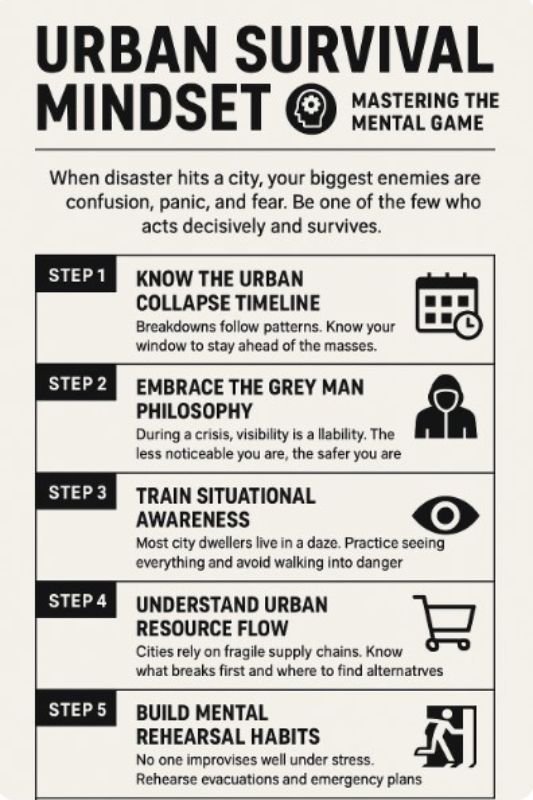
🔪 Part 2: Tactical Urban Survival Strategies That Actually Work
Now that you’ve got the right mindset, it’s time to dive into urban survival strategies you can actually implement before and during a collapse. These aren’t theory—they’re grounded in experience from real crises around the world.
✅ 1. Secure Your Shelter Before You Need It
Your home is your first fortress. Whether you’re in a high-rise, a townhouse, or a basement flat—defense starts with deterrence.
Urban Shelter Tips:
- Reinforce doors with portable door braces or hinge locks
- Blackout all windows with tape and dark plastic or thermal blankets
- Soundproof rooms with carpets, bookshelves, or foam
- Use mirror traps or baby monitors as makeshift movement alerts
“Most looters don’t ‘break in’—they push on a door and walk in.”
— Security Study, Ready.gov 2022
✅ 2. Build a Low-Profile Everyday Carry (EDC) Kit
An urban EDC kit should blend into the city and help you navigate fast.
🧳 Urban EDC Essentials:
- Folding knife (legal blade length)
- Tactical flashlight (1000+ lumens, strobe mode)
- Multitool (Leatherman or similar)
- Water purification straw (Sawyer Mini)
- Local paper map (highlighted escape routes)
- Gloves + mask (for dust, debris, anonymity)
- USB power bank + offline documents
💡 Keep your EDC in a messenger bag or backpack that doesn’t scream “tactical”—black, grey, or tan are perfect.
✅ 3. Master Urban Water Procurement
In most cities, tap water fails within 48 hours of power loss. When that happens, you’ll need to scavenge creatively.
Urban Water Sources:
- Toilet tanks (NOT the bowl)
- Rooftop AC condensers
- Water heaters (30–60 gallons)
- Public fountains or fire hydrants (requires tools)
- Rainwater collection (balcony tarp, trash bag funnel)
✅ Always filter AND purify urban water—assume contamination.
✅ 4. Know How to Scavenge Without Getting Shot
Scavenging is essential in a collapsed city—but it can get you killed if done wrong.
Safe Scavenging Tips:
- Move at dawn or dusk
- Never scavenge the same place twice
- Stick to overlooked spots: vending machines, schools, office fridges
- Avoid large crowds or active looters
- Don’t carry everything—take what’s light, useful, and mobile
🧠 Tip: In a real crisis, your knowledge of your own neighborhood is your most valuable map. Pre-scout now.
✅ 5. Fortify with Layers, Not Guns
Not everyone can arm themselves legally or logistically. The best urban defense strategies are passive and layered.
Urban Defense Layers:
- Visual deterrent – signs, fake cams, lights
- Noise barriers – dogs, alarms, broken glass on entryways
- Escape paths – backdoors, roof exits, fire escapes
- Community watch – discreet networks, mutual lookout
“In the city, not being chosen as a target is better than winning a gunfight.”
— Urban Self-Defense Workshop, 2021
✅ 6. Create Multiple Bug-Out Routes
City roads clog fast during disaster. Have at least 3 escape options:
| Route Type | Why It Matters |
|---|---|
| Walking route | For gridlock and fuel loss |
| Bike route | Quiet, fast, off-road paths |
| Vehicle route | For speed—if early escape |
🔗 Use abandoned rail tracks, canals, alley networks. Know which roads get blocked by protests or accidents.
✅ 7. Hide in Plain Sight (Urban Camouflage)
After 72 hours, your biggest danger is other people. Looking prepared = target.
How to Camouflage:
- Dress in worn, non-branded clothing
- Rub some dirt or charcoal on skin/clothes
- Avoid large backpacks or military gear
- Walk slowly. Limp if needed. Hide confidence.
🧠 Counter-intuitive rule: Looking weak makes you safer in some scenarios.
✅ 8. Build an Info-Gathering System
Without phones or media, street intel is everything.
Tools to Stay Informed:
- Hand-crank radio (NOAA or AM/FM)
- Community radio or walkie-talkie net
- Tactical scanner (police/fire frequencies)
- Watch local churches or community centers
“The most valuable prepper is the one who knows what’s coming before it arrives.”
✅ 9. Harden Your Apartment Without Drawing Attention
You don’t want your building thinking you’re hoarding.
Discreet Apartment Prep:
- Use blackout curtains with thermal insulation
- Build internal “safe room” with sound insulation
- Cache supplies in hidden spots (floorboards, behind appliances)
- Use scent blockers for cooking (vent internally)
Silence and invisibility are more valuable than weapons in early crisis days.
✅ 10. Plan for Psychological Warfare
The stress, noise, and fear of urban disaster can break people.
Mental Resilience Practices:
- Sleep in short cycles (90 min max if needed)
- Practice breathing exercises to reduce panic
- Journal or record your decisions to stay focused
- Avoid conflict if possible—every fight drains you
“Mental exhaustion is what breaks most people—not lack of food or ammo.”
🏁 Part 3: Long-Term Urban Survival – When to Stay, When to Go, and How to Endure
Urban survival doesn’t end after 72 hours. Some disasters stretch into weeks or even months—and in some cases, your only chance of survival is learning how to live inside the collapse.
This final section focuses on long-term urban survival strategies, how to read the signs that it’s time to bug out, and how to build resilience without losing your sanity or soul.
📈 Knowing When to Stay or Go: The Urban Exit Indicators
Most people wait too long to leave the city—and then it’s too late. But evacuating too early can also burn resources and create exposure.
🚨 Key Bug-Out Triggers:
- Grid failure + cellular blackout for more than 72 hours
- Military or law enforcement abandoning neighborhoods
- Widespread looting or arson on residential streets
- Hospitals refusing new patients or operating in triage-only mode
- Collapse of food distribution networks (no trucks for 5+ days)
- Water pressure failure + trash accumulation = disease outbreak warning
🧠 If 3 or more of these indicators are active at once, bugging out becomes the safer choice—even if your urban shelter is well-prepped.
🛡️ Building Urban Resilience for the Long Haul
If you’re staying, you need to transform your city life into a sustainable, secure system. This isn’t easy—but with the right setup, it’s possible.
🔧 Long-Term Urban Survival Plan:
- Multi-month food rotation: Use dry goods (rice, beans, oats), canned goods, and fermented staples.
- Apartment farming: Microgreens, sprouting, bucket gardening—maximize every windowsill and balcony.
- Solar window chargers: For flashlights, radios, phones.
- Composting toilet / sanitation: If water fails, you need backup hygiene to avoid disease.
- Hidden supply caches: Keep extras in alternate floors, rooftops, basements. Never centralize everything.
“The longer you survive in the city, the more your advantage grows over those who fled too late or too scared.”
🧑🤝🧑 Urban Community Survival: Build or Break
While rural communities often default to cooperation, cities are fragmented. But that doesn’t mean you can’t form small cells of trust.
🧩 How to Build a Survival Cell:
- Identify 2–4 neighbors or coworkers with practical skills (nurse, tradesperson, cook)
- Establish a quiet check-in system (lights, knocks, messages)
- Share non-critical supplies to build trust (water, trash bags, firewood)
- Never disclose the full extent of your resources
Avoid large, noisy groups. Tight, functional alliances save lives without creating chaos.
🧠 Emotional Endurance: The Hidden Battle
Urban collapse hits the psyche hard: sirens, screams, smoke, silence. Even trained responders can break down.
🧘 Emotional Resilience Checklist:
- Create a structured daily routine (food, hygiene, patrol, rest)
- Limit exposure to despair (blocked windows, earplugs, controlled media)
- Rotate tasks to reduce burnout
- Keep morale items (photos, books, playlists)
In long-term survival, the enemy is not just the collapse—it’s despair.
🔗 Internal Links to Deepen Your Preps:
- 👉 Bug Out Route Planning: Tools, Maps, and Mistakes to Avoid
- 👉 Family Bug Out Strategy: How to Prepare With Kids and Elderly
- 👉 Survival Supply System: Build Your 3-Tier Prep Framework
🔗 DoFollow External Sources:
🧠 Final Thoughts: Your City, Your Fortress—or Your Trap
Surviving in a city isn’t madness—it’s mastery. It requires a balance of stealth, strength, and strategy.
- If you’re committed to staying: turn your home into a bunker, your mindset into a weapon, and your block into an outpost.
- If you’re planning to leave: prepare early, rehearse often, and don’t hesitate when the signs are clear.
But above all, remember:
“Urban survival isn’t about escaping the collapse—it’s about outlasting the chaos and reclaiming control, one day at a time.”
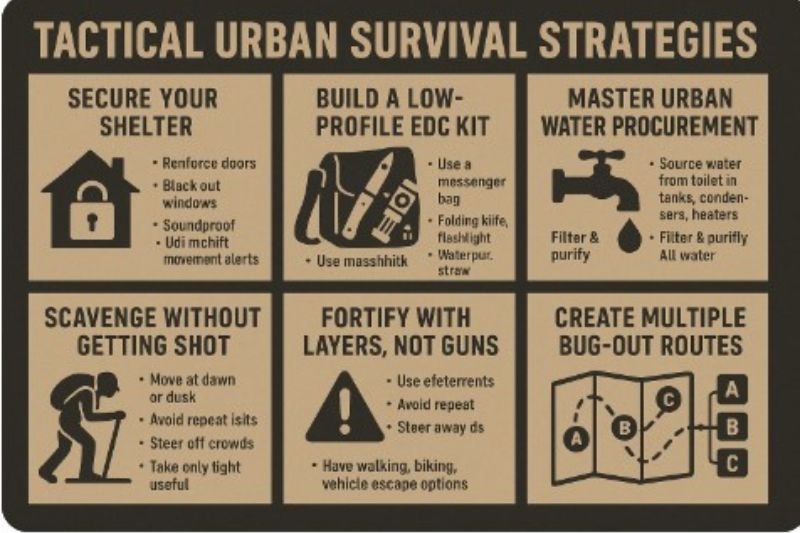
❓ FAQ – Urban Survival Strategies
1. Can I defend my apartment if looters try to break in?
Yes — but effective defense in an urban collapse scenario is about deterrence, not combat. Your goal is to avoid direct confrontation by creating layers of passive security and psychological barriers.
In a true collapse or riot scenario, your apartment is both your sanctuary and your trap. The idea of “defending your home” might sound heroic, but in a citywide emergency, engaging intruders in direct combat often brings more danger than safety. The sound of a gunshot, a scream, or even a flashlight beam can draw more attackers than it deters. That’s why your primary focus should be on prevention through preparation — keeping trouble out, rather than fighting it once it’s in.
Layered Passive Defense Strategy
Start by thinking in layers, the same way a military base or castle would be designed:
- Outer layer – Visual deterrence
Make your apartment look like it’s already been looted or abandoned. Cover windows with blackout material, tape, cardboard, or even soot-stained sheets. You can spray-paint warning messages like “Infected – Quarantine” or “Looted” near the entrance — not to threaten, but to convince potential intruders to move on without engaging. - Mid layer – Reinforced access points
Strengthen your door and window systems quietly. Use metal braces, security bars, internal door jams, or even basic barricades made from furniture. If available, install a peephole cover or use a discreet surveillance system (battery-powered cameras, mirrors) to monitor the hallway without revealing your presence. - Inner layer – Sound and light discipline
Inside, your survival depends on silence. No music. No visible light leaks at night. Use low-watt red LEDs or candles with strict blackout controls. Cooking smells, coughing, even whispered conversations near doors or vents can signal occupancy. In short: act as if no one lives there. - Psychological deterrents
Signs, noise makers, or dummy setups can work surprisingly well. Motion-activated alarms (even toy ones), battery-powered buzzers, or a dog barking sound loop can make intruders think twice. Some preppers even use “fake booby trap” signs or noise-triggered voice messages: “You’ve been detected. Leave now.”
What NOT to do
- Avoid open confrontation unless absolutely cornered. A shootout in a hallway or apartment invites chaos and retaliation.
- Don’t display strength unnecessarily. A well-lit window or a flag with a skull symbol doesn’t scare off looters — it challenges them.
- Avoid noise escalation. Even if you manage to scare one group away, the noise could attract another one that’s better armed or more desperate.
Mental posture: Be invisible, not invincible
The most dangerous mindset is believing you’re the “last stand hero.” Survival is not about pride or bravado — it’s about outlasting the threat. In most cases, the best move is to disappear. Let looters pass your door thinking it’s already empty, cursed, or not worth the effort. Every confrontation avoided is energy preserved, injuries prevented, and life extended.
In summary, you can defend your apartment — but not like in the movies. Defense means being prepared, hidden, and hardened, not loud and aggressive. Your home should be a “grey zone” — unnoticeable, unattractive, and secure from the inside out.
Q2: What’s the safest place in a building during a riot?
Mid-level floors. Ground floor is exposed. Top floors can trap you. Always maintain vertical mobility (escape ladders, stairs).
Q3: Can I grow food in an apartment?
Yes. Use microgreens, sprouts, mushrooms, and hydroponics. It won’t feed a family, but it supplements nutrition and boosts morale.
Q4: How do I avoid being targeted?
Blend in, limit visibility, control noise and light, and keep a low profile even post-collapse. Being invisible is safer than being strong.
2. What’s the safest place in a building during a riot?
In most scenarios, mid-level floors are the safest. Ground floors are too exposed, and top floors can become death traps if vertical escape is blocked. Your survival depends on balancing security, mobility, and visibility.
When civil unrest erupts in densely populated areas, buildings quickly shift from being shelters to becoming strategic liabilities. The floor you choose to occupy in your apartment complex—or any multi-story building—can mean the difference between safety and entrapment.
Why ground floors are dangerous
The ground level is the first place looters, rioters, or fleeing crowds will reach. It’s the most visible, the easiest to break into, and the hardest to defend discreetly. Doors and windows on the street level can be smashed with little effort, and once a crowd knows there’s access, others will follow. Even if you manage to fortify a ground-floor unit, you’re still exposed to:
- Broken glass, fires, or tear gas from the outside.
- Noise that disrupts sleep, concentration, and communication.
- Being directly in the path of looters or law enforcement raids.
If your only escape route is out the front door, and that door faces the chaos, your options are reduced to none when things go bad.
Why upper floors aren’t always safer
While upper levels provide some distance from the action, they introduce a new set of risks — especially during prolonged crises:
- Fire risk: If fires break out in lower levels (deliberately or by accident), upper floors quickly become chimneys of death with no way down.
- Water supply issues: Pumps often fail during blackouts. Carrying water up several flights of stairs becomes exhausting.
- Escape routes are limited: Elevators will be disabled, and stairwells could be blocked. If your building has no rooftop access or emergency ladder, you’re trapped.
Some high-rise buildings also feature security doors or fire doors that can lock you in or prevent movement between floors if activated.
The mid-level advantage
Mid-level floors — typically between the 3rd and 6th — strike a balance between distance from danger and access to escape. Here’s why they’re ideal:
- They’re high enough to avoid ground-level break-ins or random attacks.
- They’re low enough that you can descend quickly if you need to evacuate.
- You can potentially access neighboring rooftops, balconies, or secondary stairwells.
- In case of power failure, climbing or descending a few floors by stairs is still manageable.
It’s also easier to create makeshift escape systems from a mid-floor, such as:
- Collapsible ladders
- Rappelling setups from balconies
- Rope or bedsheet escape systems (only as last resorts)
Choosing your position within the floor
Within the apartment itself, positioning matters too. Avoid units that face main streets or entryways. Instead, choose a unit that:
- Faces a quiet side or inner courtyard
- Is not directly above building entrances
- Has at least two potential exit paths (stairwell + window/balcony)
Even within your safe floor, your internal layout should support quick access to bags, escape gear, water, and comms equipment. Treat your apartment like a compact bunker: optimized, layered, and efficient.
3. Can I grow food in an apartment during a crisis?
Yes, but not to full self-sufficiency. You can grow a variety of compact, fast-growing crops such as microgreens, sprouts, mushrooms, and herbs using minimal space. These won’t feed a family, but they will supplement your nutrition and morale when food supplies are cut.
In a long-term crisis or collapse, access to fresh food becomes a serious concern — especially in cities, where gardening space is virtually nonexistent. Grocery stores may be empty, unsafe, or closed. While apartment dwellers don’t have the luxury of land, they can still cultivate small-scale indoor food systems that offer real benefits in terms of health, energy, and mental resilience.
What you can realistically grow indoors
The key is to focus on high-nutrient crops that grow fast in small containers. Here are the most practical options for an apartment setup:
- Microgreens: These are immature versions of leafy vegetables like broccoli, radish, kale, and mustard. They grow in 7–10 days, require no sunlight (just LED grow lights), and are packed with vitamins and antioxidants.
Ideal for: Windowsills, countertops, vertical trays. - Sprouts: Sprouting seeds such as mung beans, lentils, and alfalfa in jars takes 3–5 days and requires no soil at all.
Advantage: Minimal water, zero light requirement, highly efficient. - Mushrooms: Oyster mushrooms, lion’s mane, and shiitake can be grown in dark closets using starter kits. These fungi provide both protein and texture — rare in survival diets.
Bonus: Mushrooms thrive where light-sensitive crops don’t. - Herbs: Basil, mint, cilantro, and parsley can be grown in small pots. They enhance bland stored food and provide minor medicinal benefits.
Useful for: Digestive aid, flavor, aroma. - Hydroponic lettuce or greens: If you can invest in a basic hydroponic system (even a DIY one), you can grow leafy greens consistently with nutrient water, no soil, and very little space.
These crops aren’t going to replace bulk calories like rice or beans, but in terms of fresh nutrients, psychological comfort, and long-term sustainability, they make a serious difference.
Why grow food if it won’t feed you fully?
Survival isn’t just about calories — it’s about functioning under stress. Here’s what small-scale urban growing actually provides:
- Nutrition variety: Even with stored food, you risk vitamin deficiencies over time. Fresh greens can help prevent that.
- Immune support: Fresh sprouts and herbs can reduce the chances of illness during a collapse, when medical aid may not be available.
- Morale boost: Watching something grow gives you a psychological anchor. It creates routine, purpose, and hope — all vital in dark times.
- Bartering potential: In prolonged crises, fresh greens, herbs, or mushrooms could become high-value trade items, especially in urban areas where few can grow them.
Space-saving tips for apartment gardening
- Use vertical space: Hanging planters, stacked trays, or shelves near light sources can multiply yield.
- Repurpose containers: Cut plastic bottles, jars, buckets, or storage bins can all become pots.
- Control light and humidity: Simple LED grow lights and water trays can keep a mini farm running in a single room.
- Cycle your crops: Rotate microgreens every 7–10 days, and sprouts every 3–5, to keep a continuous flow.
In summary, you won’t become self-sufficient growing food in an apartment — but that’s not the goal. The goal is to supplement what you have, maintain better health, and support mental clarity in long-term confinement or collapse scenarios. Even a few trays of greens can give you the psychological and nutritional edge that makes a real difference.
4. How do I avoid being targeted during urban collapse?
The key to staying safe in a lawless environment is to remain invisible. Don’t stand out. Don’t make noise. Don’t appear prepared. In a world where desperation rules, being strong makes you a target — but being forgettable makes you safe.
When civil order breaks down — whether due to riots, economic collapse, or infrastructure failure — the rules of normal society no longer apply. People become unpredictable, and resources become scarce. In that environment, visibility equals vulnerability. If someone sees that you have food, power, or weapons, they may decide to take it — even if it means hurting you.
That’s why the core strategy in urban survival is low profile living: blending in, staying quiet, and controlling every signal you send to the outside world.
1. Look like everyone else — or worse
One of the most dangerous mistakes preppers make is looking “prepared.” Tactical gear, clean clothes, working lights, or even a healthy posture can attract unwanted attention.
You want to project the opposite:
- Wear worn or dirty clothes, especially when moving outside.
- Walk slowly, with lowered posture, and avoid eye contact.
- Avoid body armor or visible tools in plain sight unless absolutely necessary.
- If possible, smudge windows, wear a tired expression, and look like you have nothing worth taking.
The best camouflage in a collapse is poverty. If you look like everyone else who’s struggling, no one will give you a second glance.
2. Control noise, light, and scent
Even a single light in a dark city can draw attention from blocks away. The smell of cooked food or the sound of conversation can betray your position instantly.
- Use blackout curtains on all windows, even during the day.
- Light only red LEDs or candles, and only in covered areas.
- Avoid cooking during peak activity hours, and keep spices minimal to reduce aroma.
- Place rugs or towels under doors to block light and scent leakage.
- Don’t talk near windows, vents, or walls that connect to other apartments.
Your space should feel like a vacuum — no light, no sound, no signs of life to the outside world.
3. Limit your movement and patterns
The more people see you, the more likely they are to remember you. Even friendly neighbors can become threats under pressure.
- Don’t leave your apartment unless it’s absolutely necessary.
- Change your route every time you go out.
- Never go out at the same time or in the same clothing.
- Avoid visible backpacks, gear bags, or signs you’re carrying supplies.
- If approached, lie about your situation. Appear as helpless and empty-handed as possible.
Patterns make you predictable. And predictable people become prey.
4. Don’t talk, don’t show, don’t trust
Trust is a luxury you can’t afford in urban collapse. People change fast when they’re hungry or scared — and even a harmless conversation can reveal information you didn’t intend to share.
- Don’t talk about your preps, supplies, or plans to anyone.
- Don’t post online, use social media, or leave notes or markers near your location.
- Don’t show generosity unless you’re absolutely sure it’s safe — generosity attracts attention.
- If you have to speak, speak as little as possible and always under the assumption that you’re being watched or recorded.
Loose talk has cost more lives in history than bullets.
The Grey Man principle: be invisible on purpose
This entire philosophy is often summed up as the “Grey Man” mindset. It’s about blending into your environment so well that no one notices you — not because you’re hiding, but because you’ve become part of the background.
In a post-collapse urban landscape, being seen is dangerous. Whether it’s criminals, desperate civilians, or opportunistic groups, attention is a liability. Your job is to vanish into the noise, survive unnoticed, and live to rebuild when things stabilize.









